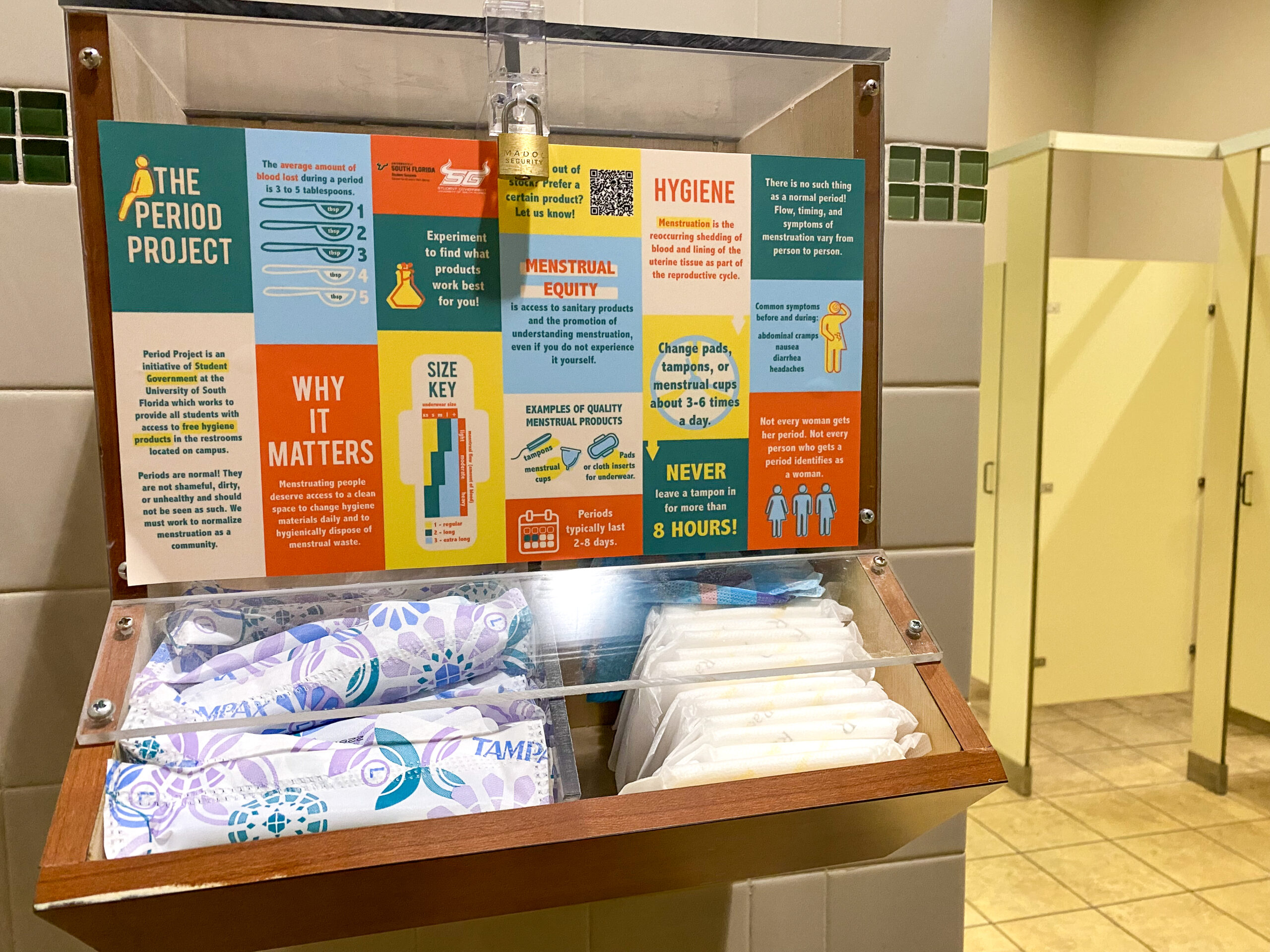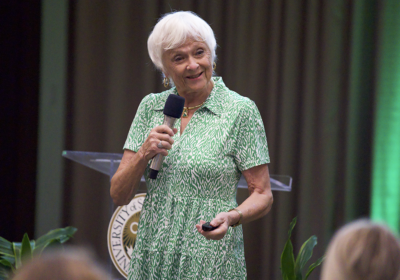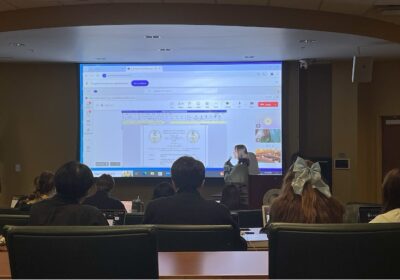Students raise concerns about empty period boxes in bathrooms

Students like junior political science major Zeina Bazzi have noticed the menstrual product boxes that are supposed to be in some women’s bathrooms have been empty.
“It’s honestly very frustrating that SG made the promise to have these products in our bathrooms and recently they just haven’t kept up with that, I don’t know if it’s their fault or if people just grab a handful but there needs to be a solution to this problem,” she said.
Student Government (SG) started the Period Project along with Planned Parenthood Generation Action USF (PPGA) in the first Consolidated term, according to Morgan Davis, SG director of diversity, wellness and engagement.
PPGA said they were unaware that the boxes have been empty recently though. SG oversees monitoring and refilling the boxes, according to PPGA president Prachi Misra.
There are QR codes that allow students to let SG know if they are running low, but most feedback that is left is about products that are offered or buildings students want to see more of these boxes in, according to Davis.
Davis said the QR code responses go into an Excel spreadsheet, and that they are checked weekly. Once they see the feedback, she said they try to restock as soon as possible.
“Due to our ordering process and our team’s schedules, we currently can’t restock more than twice a week. The products themselves can take weeks to be delivered,” Davis said.
Another issue is that since the products are completely free to students and there is no restriction, many people take more than others which causes there to be empty boxes very quickly, according to Davis. She also said SG orders the menstrual products on Amazon. They get the money to order them from Activity & Service Fees, which are paid by every student at USF per semester. A&S fees are a $7 flat fee along with $12.08 per credit hour taken each semester.
Sophomore health sciences major Sofia Vargas said she wants to see improvement in the refilling of the boxes, and she’s disappointed in the lack of products seen in the bathroom.
“At the beginning of the year, you could tell that it was more of a priority because the boxes were full. I always saw them at the library and social science building, but now I mainly only see empty ones,” she said.
Davis said the menstrual product boxes are in the Interdisciplinary Sciences building, the College of the Arts, Cooper Hall, Marshall Student Center and the Library. The ideal goal is to get these boxes in every restroom on campus, but it is a multi-step process that makes expanding a challenge, according to Davis. SG has worked this year to expand to new buildings, but it takes a while to get approved by each building.
“This project has been a constant work in progress to be able to improve it,” Davis said.
In colleges across America, 23% of students struggle to afford menstrual hygiene products, according to a 2021 survey.
SG teamed up with PPGA to get this project on its feet. PPGA started gaining awareness for this idea by having a petition go around and by hosting drives for menstrual products. SG recognized their efforts and collaborated with them to help implement the Period Project.
When asked if there was a plan to fix the stock issues, no answer was given at the time of the interview.
“We hope that students can realize that if there is a missing need on campus, there are ways to organize and implement change to meet that need,” Misra said.






